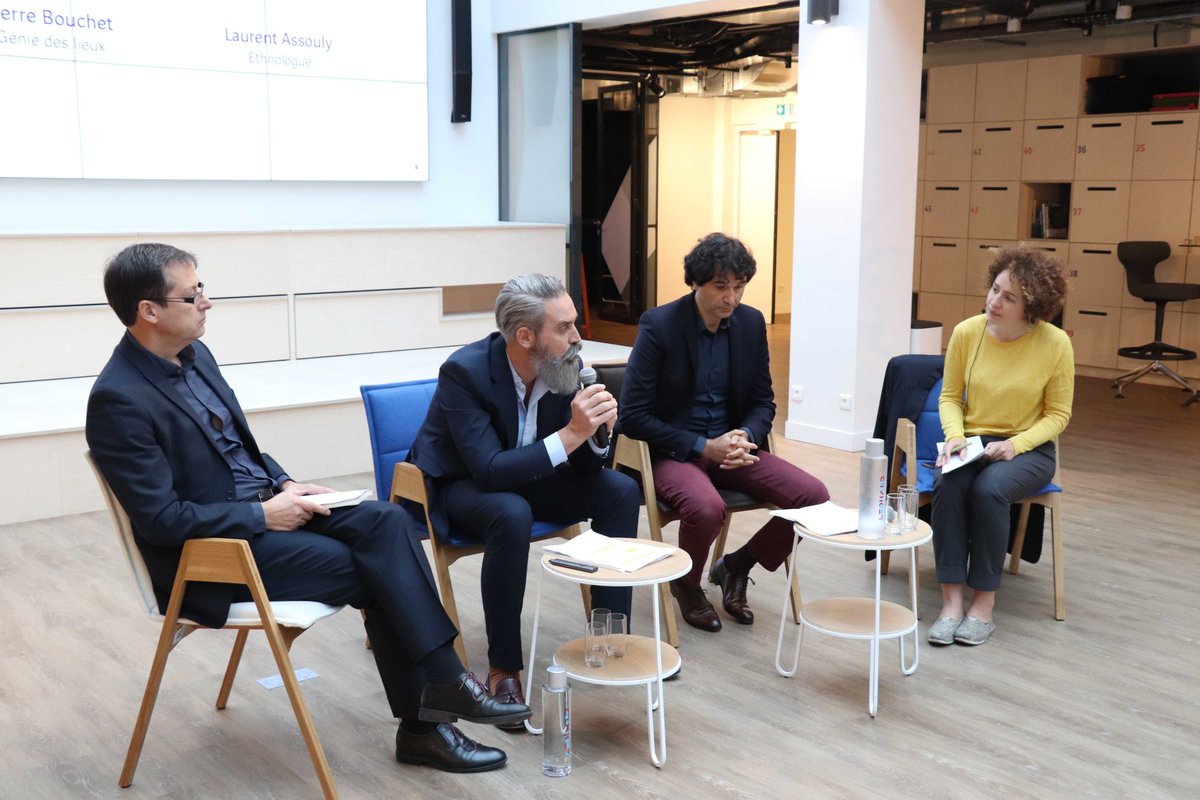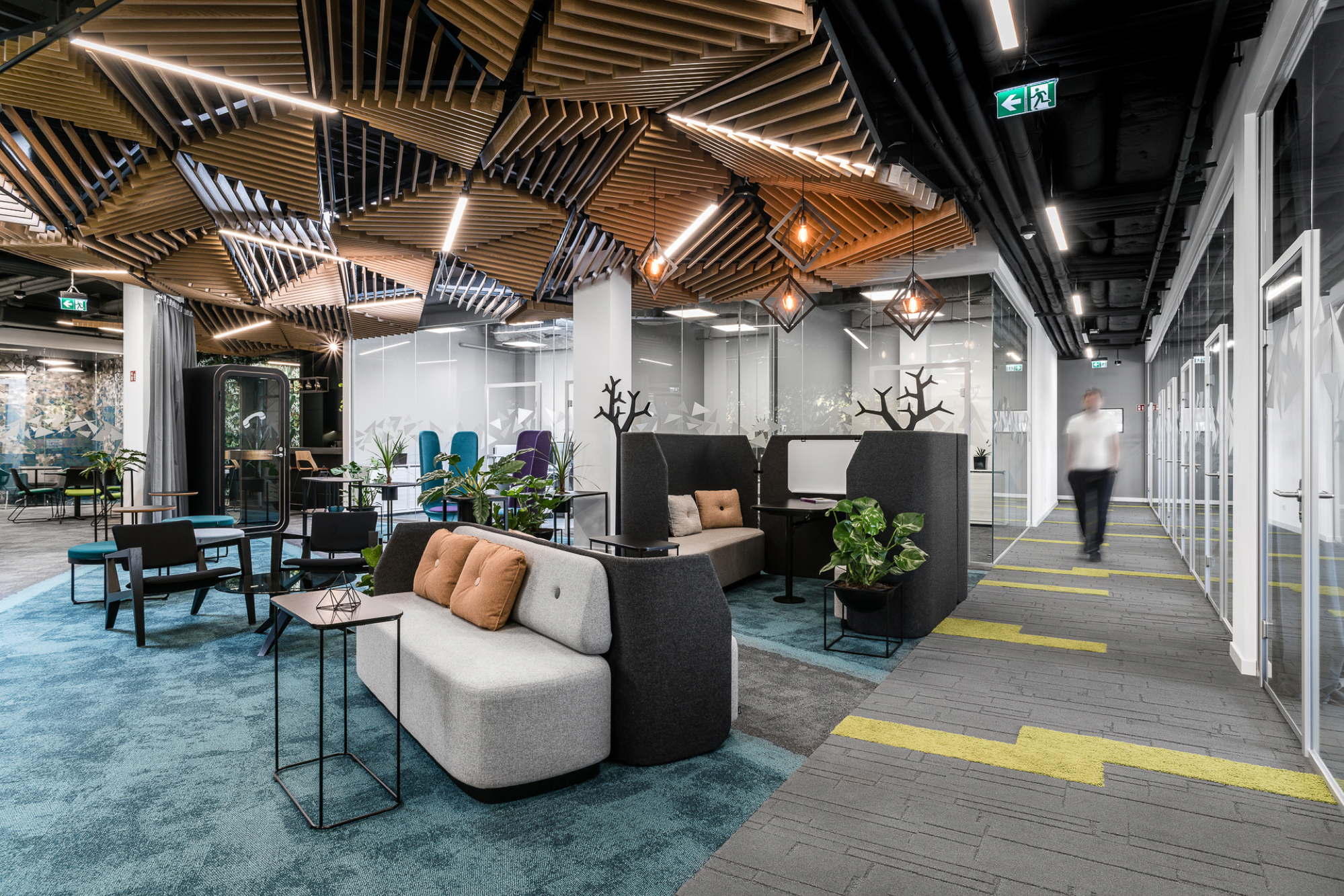
“The majority of economically active people work in the provinces, in companies employing fewer than 10 people and in traditional offices: 33% have their own office and 33% share office space.” The results of the Actineo survey describe a working world with a still very conventional structure, but it also reveals the rise of “roaming” in employee practices, with almost 39% using at least one alternative space. In this overall picture, the flexible office is still in the minority (14% of workers), but it underlines and supports this movement towards more flexible working arrangements.
This new type of work space, which does away with individual desks and offices and proposes open and modular spaces, appears to respond to a problem shared by many companies: unoccupied workstations, as much as 45% on average per station (Unwired et Regus, 2011) – a significant figure when we know that work spaces are the second-highest expense item for companies. Reorganisation of work spaces in “flex” mode looks to respond to a dual objective: first, optimising use of space, but also higher employee productivity.
Does the flexible office live up to its promises? Over and above the flexibility these new spaces provide, what impact do they have on employee wellbeing? Alain d’Iribarnes, Dominique Lozay, Pierre Bouchet, William Bouyer and Laurent Assouly met at Leonard:Paris on September 24 to discuss the potential benefits of these new work spaces.
A full video record of our meeting can be viewed (in French)
Office spaces, a sounding box for the changes taking place in the world of work
The speakers first of all demolished the common belief that this is a Paris-centric phenomenon. “Demand for flexible offices is the same everywhere in France, whatever the region and the size of the company. And the big groups are not the only clients: small companies and the public sector are also interested, like La Poste (French post office) for example”, says William Bouyer, head of the Ile de France agency of Kinnarps, the Swedish office furniture specialist.
The findings of the Actineo survey, as confirmed by Alain d’Iribarnes (chairman of Actineo’s scientific board) confirm this point, stressing the more general and deeper transformation taking place in the workplace: “We are seeing a historic break in the unity of time and space, with a multiplication of places of work. Today we need to think in terms of ‘flows’ rather than ‘stock’.” This dispersal of workplaces (at home, in co-working spaces or other employer spaces) is accompanied by a transformation of the very structure of employment in France, according to Dominique Lozay, director of the think tank New Ways of Working: “We have gone from the historic model of companies operating 100% through unlimited-term employment contracts to a much more complex ecosystem, with a higher percentage of outsourcing, limited-term contracts, subcontractors, etc. This is decisive for the way we organise space.”
The flexible office, a tool of management by space?
The flexible office aims to respond to this physical and social atomisation of the company by facilitating flows and relations between employees. The office is not only a place where you work, but becomes “a resource available to management“, as Pierre Bouchet, co-founder of Génie des Lieux, the organisation-by-space consultant, puts it. “Space is a management resource that drives creativity, that thinks collaboratively so as better to understand – and help other people understand – the way space can be used by all the people involved in the transformation.”
Modern, comfortable, attractive – “flex” offices encourage cross-cutting exchanges and the creativity of employees thanks to deliberately open design, alternating open offices and closed spaces that can be reserved for meetings. But the social decompartmentalisation generated by these spaces (with supervisory staff and employees working side by side) does not smooth out hierarchies and can even make salary differences less acceptable, according to sociologist Laurent Assouly: “Sitting next to someone who seems “normal” but who earns five times more than you, that can create problems. This reflects the democratisation and “normalisation” associated with the flexible office.” Worse, this spatial proximity does not bring about greater fluidity in interactions, but even generates an increase in written exchanges: “We are deluding ourselves about how the greater physical proximity introduced by flex working can lead to a decrease in the number of emails. It’s a lure: the number of emails rises while face-to-face interactions tend to decrease.”

Flexible office, happy office?
So, will the flexible office make us regret our good old open spaces? For Laurent Assouly, the attractive proposition of these spaces hides the drawbacks arising from their (too) great flexibility: “The conventional office offers security, we are relieved from psychological anxiety when we know who is in front of us, behind us, next to us, and don’t have to adjust to a new situation every day. Conversely, we observe a loss of territorial markers in flexible offices, and the feeling of becoming a stranger in the company you work for.”
To limit the undesirable side effects, the different speakers agree on the importance of supporting employees through this change, by focusing on their needs when designing the system. Dominique Lozay rightly points out that the flexible office is a tool, but not a miracle solution. On its own, it cannot solve the problems inherent to the management structure: “There is a certain managerial laziness in believing that the flexible office, by breaking down silos, will change the way employees work. You put the accountant next to the engineer or the marketer, but that’s not enough to get them working together!”
The flexible office is a solution that addresses the big transformations in the world of work: the switch to management by project, the desire for greater flexibility facilitated by the introduction of digital tools, better use of spaces to stimulate creativity and encourage encounters. But companies keen to switch to flex working cannot rely on “instagrammable” design blueprints if they want employees to wholeheartedly adopt the new arrangements. For Dominique Lozay, “the flexible office must be the outcome of a management project“: educational accompaniment, corporate vision and co-construction with the teams will be the essential ingredients for creating fully functional work spaces…. without reproducing the drawbacks associated with open space office arrangements.
Did you find this meeting interesting? Don’t miss our next rendezvous on future work arrangements!
